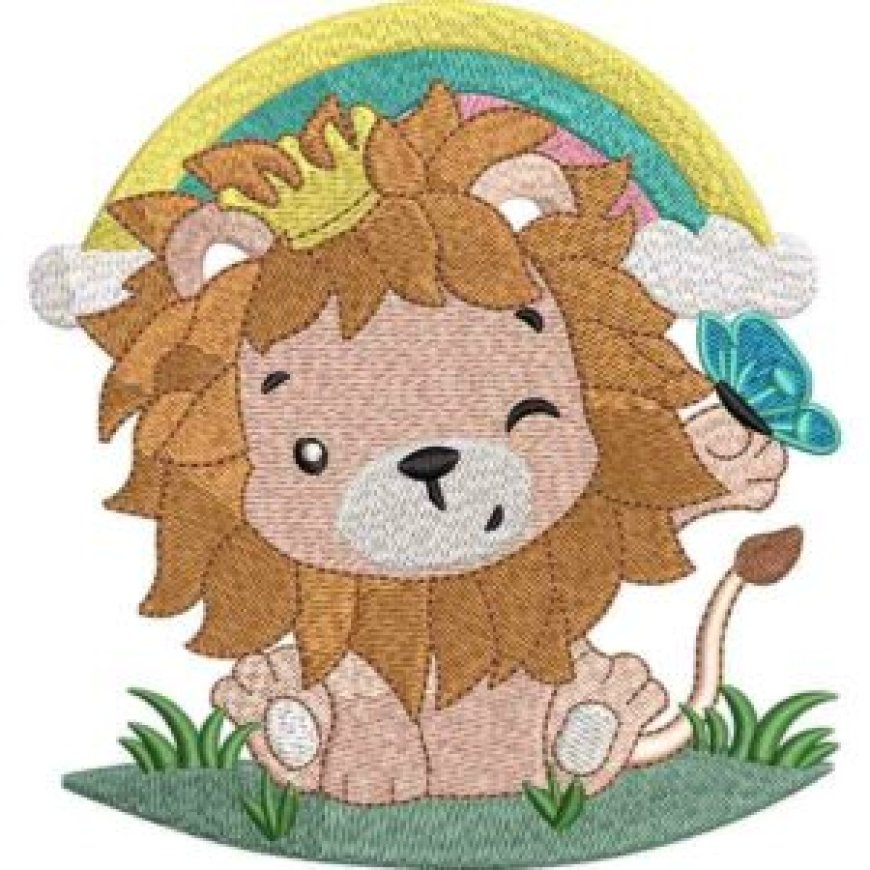The Role of Color Matching in Logo Digitizing for Embroidery
ZDigitizing is offering a wide range of digitizing solutions to meet the needs of businesses and individuals alike. With expertise in logo digitizing.

Color plays a crucial role in creating impactful logos, and when these logos are converted into embroidery designs, maintaining color fidelity becomes even more critical. Whether you’re digitizing a company logo or a personalized design, accurate color matching ensures that the final embroidered piece reflects the original logo's identity. This article delves into the importance of color matching in logo digitizing for embroidery, offering insights and actionable tips to achieve the best results.
Understanding the Role of Color in Embroidery
Embroidery is not just about stitching a design; it’s about bringing a logo to life through textures, patterns, and colors. When you digitize logo for embroidery, the focus is not only on creating an embroidery-friendly format but also on selecting the right thread colors to replicate the logo's visual appeal.
Modern image digitizers for embroidery simplify the process, but achieving perfect color matching requires a deep understanding of threads, fabrics, and lighting conditions.
Why Is Color Matching Essential in Logo Digitizing?
1. Brand Consistency
For businesses, logos are a representation of their identity. Any deviation in color can dilute the brand image. Accurate color matching ensures that embroidered logos remain true to the original design.
2. Enhanced Aesthetic Appeal
Color harmony enhances the overall look of an embroidered logo, making it visually striking and professional.
3. Avoiding Customer Dissatisfaction
If colors in the embroidered design differ from expectations, it can lead to customer dissatisfaction. Ensuring precise color matching helps build trust and satisfaction.
Tips for Accurate Color Matching in Logo Digitizing
1. Use High-Quality Digitizing Software
Invest in top-tier software like Wilcom or Pulse to handle the intricacies of color matching effectively. These tools allow you to assign thread colors that closely match the logo's hues.
- Pro Tip: Look for software that integrates thread color libraries from popular brands like Madeira, Isacord, or Gütermann.
2. Choose Threads Wisely
Embroidery threads come in various shades, materials, and finishes. Choose threads that match the logo's original colors as closely as possible.
- Rayon Threads: Provide a shiny finish, ideal for intricate designs.
- Polyester Threads: Durable and vibrant, suitable for outdoor applications.
3. Understand Color Charts
Thread manufacturers offer detailed color charts that correlate their thread shades with standard color codes like Pantone. Use these charts to find the closest match.
- Pro Tip: Keep a physical color chart handy to assess thread colors under natural light.
4. Calibrate Your Monitor
When working with digital designs, ensure your monitor is color-calibrated. This reduces discrepancies between the on-screen design and the embroidered output.
5. Test on Sample Fabrics
Fabric texture and color can alter the perception of thread colors. Always test the design on a fabric similar to the final product to verify color accuracy.
6. Use Color Blending Techniques
For logos with gradients or subtle color transitions, blending thread colors can create a visually appealing effect.
- Pro Tip: Combine running stitches with varying densities to achieve a gradient effect.
7. Communicate with Clients
If you’re working on a custom project, discuss thread color options with the client. Sharing thread samples can help manage expectations and ensure satisfaction.
Challenges in Color Matching for Embroidery
1. Limited Thread Shades
Unlike digital designs, where millions of colors are available, embroidery threads come in a limited range of shades. This makes finding an exact match challenging.
2. Fabric Interaction
The fabric’s color and texture can influence how thread colors appear. Dark fabrics, in particular, can cause lighter threads to lose vibrancy.
3. Lighting Conditions
Thread colors can look different under varying lighting conditions. Always assess colors under natural daylight for accurate results.
Technological Advances in Color Matching
Modern image digitizer for embroidery have revolutionized color matching. These tools now include features like:
- Automatic Thread Selection: Based on the original design’s color codes.
- Realistic Previews: Allowing you to visualize the embroidered logo before production.
- AI-Powered Adjustments: Tools that recommend thread shades closest to the original colors.
These advancements have significantly reduced the trial-and-error phase in color matching, making the process more efficient.
Conclusion
Accurate color matching is an integral part of digitizing logos for embroidery. It ensures brand consistency, enhances visual appeal, and meets client expectations. While tools like image digitizers for embroidery simplify the process, achieving perfection requires a blend of technology, skill, and attention to detail. By following the tips outlined in this guide, you can master the art of color matching and produce stunning embroidered logos that truly stand out.
FAQs
1. What is the role of digitizing in embroidery?
Digitizing converts a logo or design into a machine-readable embroidery file, guiding the embroidery machine on stitch placement, type, and color.
2. How do I ensure color accuracy in digitized logos?
Use high-quality digitizing software, select threads carefully, and test the design on sample fabrics to ensure color accuracy.
3. Can I use any thread for embroidery?
It’s best to use threads recommended by the digitizing software or thread manufacturers, as these ensure durability and color fidelity.
4. What tools can help with color matching?
Color charts, digitizing software, and advanced image digitizers for embroidery are essential tools for precise color matching.
5. Why do thread colors appear different on fabric?
Fabric color, texture, and lighting conditions can alter the perceived color of threads. Testing on sample fabrics helps mitigate this issue.
What's Your Reaction?


























